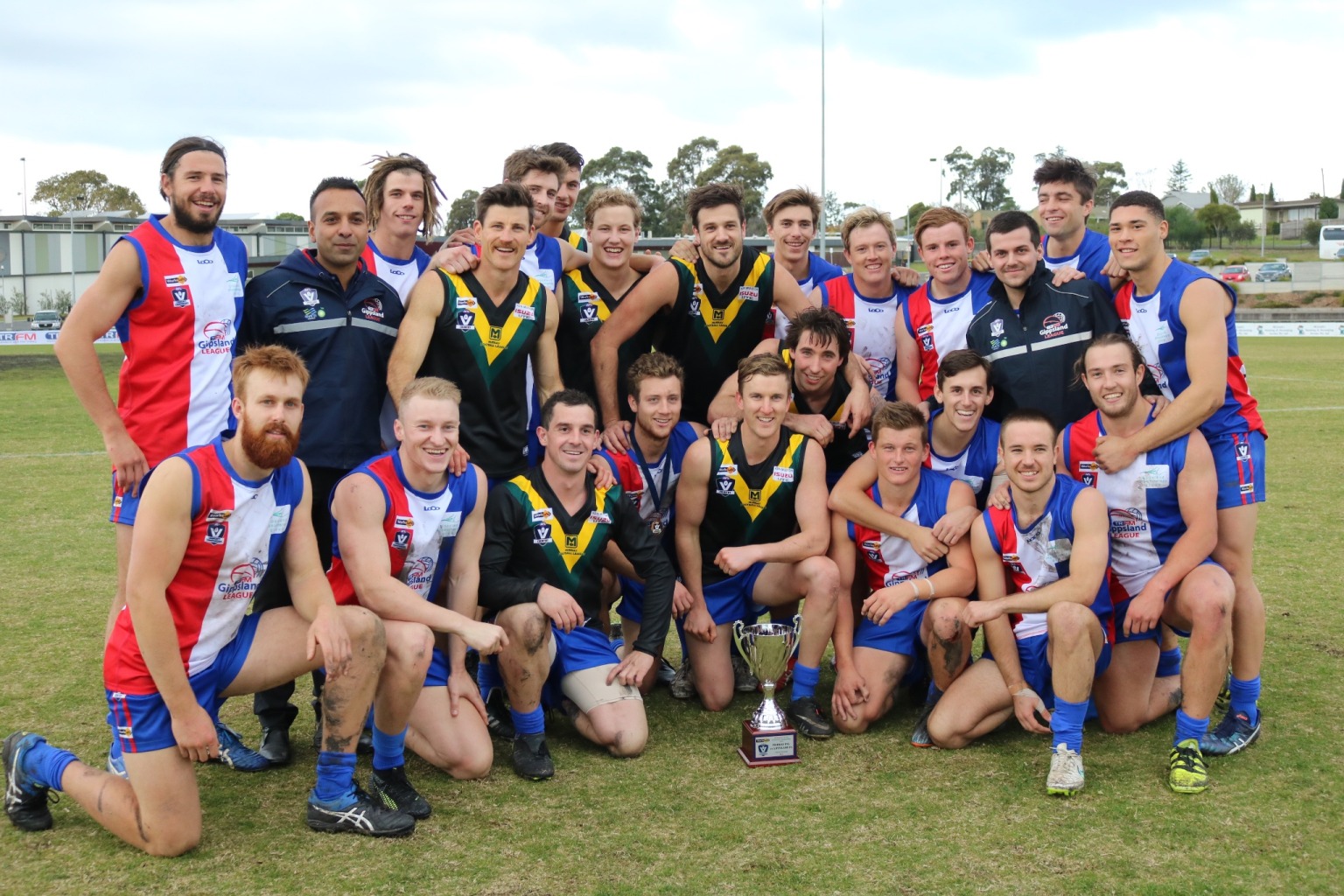INTERLEAGUE HISTORY
By Paul Carter
The formation of the Latrobe Valley Football League was somewhat of an amalgamation of the Gippsland and Central Gippsland leagues. Initiated by the Sale Football Club, seven of the ten Central Gippsland clubs, those along the main Melbourne rail line, joined with Sale to form the LVFL. There had been an unsuccessful attempt to join the two leagues at the end of the 1948 season by Sale, Maffra and Bairnsdale, but their recommendation of the break-up of the CGFL was refused.
The Gippsland Football League and the Central Gippsland League had a long standing history of playing mutually arranged interleague football against each other, dating back to the early 1930s. The shield that they played for still hangs today in Morwell Football Club’s Gert Mahoney room. So it’s no surprise that the first five interleague games played by the LVFL were all against the Gippsland Football League. The LVFL won the initial contest at Maffra in 1954, 13.15.93 to 8.16.64, but the Gippslanders bounced back to win the following three in 1955, 1956 and 1957 at Morwell, Maffra and Yallourn respectively.
In 1958 the VCFL initiated their Centenary Championships, to mark the one hundredth anniversary of the inception of Australian Rules Football.The fifteen major leagues of Victoria and southern New South Wales were divided into four districts, with each district conducting a championship.
The LVFL and GFL competed against the Mornington Peninsula and South Gippsland leagues, with the LVFL winning its semi-final against Gippsland by twelve points, 12.16.88 to 11.10.76.
The Final was played at Morwell on 21st June with the losers, Mornington and Gippsland playing a curtain raiser to Latrobe Valley and South Gippsland. The final was a tense affair, with just seven goals to half time, Latrobe Valley behind by a point, 3.8 to 4.3. Play opened up after half time with the valley boys adding six goals in each of the two final quarters to runaway with the game 15.18.108 to South Gippsland 10.6.66.The league was presented with a flag in the green and gold colours of the ANFC and players in the LVFL’s winning team were awarded a tie in red, white and blue with the league’s monogram.
In 1959 the most one-sided of the contests between the LVFL and GFL saw the Valley winners by sixty-one points, 13.23.101 to 5.10.40, the match played at Sale. Sale’s John Nix captain-coached the side, which included star players in Tom Hart, Bob Mason, Bill Milroy, Les Sweet and an 18 year-old John Somerville, destined for bigger things at Essendon. The Gippslanders were coached by Arthur Pound and included players of the caliber of Eddie Lane, Frank Munro and ex-Geelong goalkicker George Goninon.
In 1960 the LVFL took on the might of the Carlton Football Club at Morwell in the mid-season, a team which contained Sergio Silvagni (father of Stephen), 1961 Brownlow Medallist John James along with a soon-to-be-star full back in Wes Lofts. The Valley was more than competitive in going down 16.25.121 to 12.11.83.
After wins against Mornington Peninsula and Gippsland in 1961, the VCFL Country Championships, sponsored by oil company Caltex, saw the Wimmera league visit Morwell in June, 1962. The LVFL seemed to be incontrol of the match, leading by three goals at the first break and by two goals at half time. Four goals to two by the visitors in the third term reduced the Valley’s advantage to a single point and two goals to one in the final term secured the win for Wimmera by five points, 10.5.65 to 9.6.60.
Former South Melbourne hard man, Don Keyter, coached the Wimmera team. In 1963 Keyter coached the Moe Football Club and, in sensational circumstances, “won” the league’s Trood Award and Rodda Medal by five votes from teammate Allan Steel, but was ineligible to receive the award due to a suspension received during the season.
In 1963 Keyter captained the LVFL to a huge win over the Gippsland league, the last time the leagues were to meet. The LVFL scored 23.13.151 to 8.8.56, former Fitzroy player and Morwell coach Graham Donaldson acting as vice-captain.
1965 saw the LVFL back into VCFL action with a big win at Leongatha against South Gippsland, 19.15.129 to 8.8.56. The Valley was spearheaded by 17 year-old Alan Noonan, soon to take up that position with distinction with Essendon. Coached by Frank Munro, the team was captained by Alan Steele with Morwell’s Bruce Williams as vice captain.Unfortunately the Valley didn’t advance past the next round, knocked out by Mornington. A goal separated the two at half time, the Mornington side kicked away with five goals to three in the third term and held on as the Valley challenged them in the final quarter, the final scores 13.15.93 to the LVFL 12.10.82. St.Kilda players Eric Guy and Travis Payze led Mornington with future North Melbourne ruckman Barry Goodingham having a distinct height advantage at the stoppages.
Moe’s legendary coach Alby Law coached the LVFL to two wins in 1967, both away from home. The LVFL was way too strong for Alberton at Yarram, having 54 scoring shots to 19, scoring 22.32.164 to 9.9.63, then traveling to Mornington to win a thriller 18.19.127 to 17.13.115.
A crowd of finals proportions was on hand at Yallourn in June, 1968 to witness the VCFL clash of the LVFL against the powerhouse Ovens & Murray league. The gate of just over $ 2000 was larger than that year’s LVFL Grand Final gate of $ 1720. Skippered by Bairnsdale’s ex-Hawthorn player Kevin Coverdale, the LVFL put up a great fight, but was unable to match it with the O&M, going down by 34 points, 9.15.69 to 15.13.103.
In 1969 the LVFL welcomed “Mr. Football” Ted Whitten and the Footscray Football Club to Morwell. The match was a no-contest with the Bulldogs romping away to a 77 point win, 16.21.117 to 5.10.40. To avoid a colour clash, the LVFL wore Morwell’s black and gold outfit.
The LVFL concluded the 1960s with an interleague record of 10 wins and nine losses, but considering two games were against VFL clubs, maybe a 10 – 7 record would be a fairer summation.
The first interleague match of the decade saw the Valley again play host to the Footscray Football Club at Morwell in June, 1972. Under the guidance of Traralgon champion Terry Hunter the Latrobe Valley was more than competitive against the VFL side before going down 17.16.118 to 12.10. 82, Sale’s Wayne Morris best afield for the Valley with five goals.
The Caltex VCFL Championships saw the LVFL travel to Seymour in mid-1973 to do battle with the Waranga North East FL. The Valley boys were quick off the mark with six first quarter goals and held a handy, but not match-winning 33 point lead at the long break. The second half saw the LVFL dominate all over the ground as they added seven and five goals for the final two terms to run away with the match 21.18.144 to 10.11.71. Traralgon’s champion centreman Charlie Healey was the unanimous pick as best player and he led the scoring with Maroons’ teammate and future VFL champion forward Kelvin Templeton, both players contributing four goals. Moe’s Barry Rowlings and Bairnsdale rover John Burleigh also won their battles well.
The next stage was an appointment with the Goulburn Valley at Yallourn in July. Warragul coach Graeme Gahan’s tactical expertise was crucial in his handling of a very talented team. There was nothing in it most of the day as the teams entered the final quarter with the visitors holding a three point lead. Goulburn Valley scored first before the LVFL fought back through Charlie Healey and Brian “Doc” Rowlings, who took over in the midfield, youngster Kelvin Templeton converting truly to bring his match tally to eight goals, the Valley home by ten points, 16.10.106 to 14.12. 96.
The Semi-Final of the Championships in June, 1974 saw the LVFL travel to Colac to take on the Hampden league, but the locals were too strong, winning 19.10.124 to 11. 8. 74.
The LVFL’s next interleague appointment wasn’t for three years when they traveled to Bendigo. Trailing by two goals at half time, the Valley was put out of the game in the third quarter as Bendigo rattled on 6.5 to 2.3, eventually losing 18.16.124 to 10.16. 76. John Gallus was a tower of strength in the ruck, with Traralgon’s Allan Lowe on target up forward with five goals.
Moe legend Max Donelly took the reins of the interleague team in 1978 at the start of a golden era for the league. First up was the Mornington Districts at Moe. The visitors held an eight point lead at the first break, but the LVFL went into overdrive with quarters of seven, eight and finally nine goals to record an 85 point win, 27.15.177 to 13.14. 92. Murray Frew, Ian “Curly” Salmon and Stan Davidson shone for the Valley with Allan Lowe again the leading scorer with six goals. The Bendigo team visited Morwell a month later and more of the same was dealt out with the LVFL victors by 73 points, 19.17.131 to 8.10. 58. John Gallus and Len Petch teamed brilliantly in the ruck and Gallus topped his best afield effort with nine goals. A week later at Moe the Valley found West Gippsland / Bass Valley tough opponents, but eventually held on to win 12. 9. 81 to 9.13. 67.
1979 was a busy year with five interleague games played under the leadership of Jim Hart. All five games were won comfortably, culminating with the VCFL Division One Championship.To get to the final the LVFL had to overcome the mighty Ovens & Murray on their home turf in Albury. A tight first half saw the Valley with an eight point ead, but it was their third quarter effort of 6.4 to 2.6 which broke the game apart. Sale forward Ian “Emu” Jones kicked four goals as one of nine goalkickers, with Ray Sweeney and Len Petch the best for the visitors. The final was at Bendigo’s QEO where earlier in the year the LVFL had pumped Bendigo 20.15 to 11.16. The final was much closer with the LVFL leaders by just three points at the long break. Their third quarter effort was stunning, adding 7.3 to 1.7 to all but seal the match and the Championship. The final margin was 32 points with eight goalkickers sharing the load, captain Len Petch again to the fore, along with Dale Foster and Rob Ballingall.
Another heavy interleague load saw the LVFL play another five games under Angus Hume, with the Valley again undefeated, going back-to-back as VCFL Division Champions. A twenty point win at Moe against North Central was followed by a high scoring encounter with the Wimmera league (21.16 to 15.20). Goals were at a premium when the LVFL took on Bendigo at Traralgon in their annual television sponsored match. It was then off to Coleraine near the South Australian border to battle the Western Border. Only nine points separated the two at the final change before the Valley stormed home with 7.7 to 3.0 to win by forty points.
The Finals was at Sale against the Ovens & Murray. With five goals in each of the first three quarters the Valley led by 35 points. Despite a strong comeback by the O&M, the LVFL added four gaosl of their own to win by 28 points, 19.17.131 to 15.13.103. Ray Sweeney (5 goals) and Murray Frew (4) teamed well up forward, while Peter Lynch, Ray Koeleman and Peter Campbell kept the Valley forwards well supplied.
The Valley was a shock loser in the first round of 1981 to Mornington FL, 17.17 to 16.16 and also went out first up in 1982 to Geelong 20.4 to 17.8, both matches played away from home.
Under Warragul’s Ken Robinson the LVFL seemed destined for another VCFL Grand Final after it had won its three lead-up games. At Foster Trevor Fletcher (7 goals) and Joe Albanese (6) were too much for Alberton, the LVFL winners by 70 points. A month later at Moe Fletcher again led the scoring with four goals, Bairnsdale teammate Tom Alvin, soon to make his mark at Carlton, best afield in their 39 point win over West Gippsland. And so to Geelong wher an inaccurate LVFL (11.20) were too good for the home team which managed 9.11, Wayne MacInnes, Kevin Carrolan and Allan Lowe the best for the Valley. Unfortunately it was inaccuracy which cost the LVFL a place in the Final as they had eight more scoring shots than Goulburn Valley yet lost by an agonizing seven points, 15.20.110 to 18.9.117, Shane Loveless the main contributor with five goals.
The Valley came back from their first round match in 1984 at Ballarat well beaten by 49 points. A close first up win at Traralgon against Goulburn Valley in 1985 was followed by another fruitless trip to Ballarat. In 1986 the apttern was the same with a one point win at Geelong followed by a drubbing at the hands of Ballarat.
It was a case of one up and one down again in 1987 with a strong win at Morwell against Bendigo, 20.16 to 13.13 with seven goals from Shane Loveless. Traralgon trio Ric HOeben, Mark Stockdale and Rob Popplestone were the Valley’s best three. Hopes were high when Ovens & Murray visited Traralgon for the Semi-Final, the Valley off to a flier with 7.6 in the first quarter, but the vistors took control after that with 7.10 in the second term to take an 18 point half time lead. Their inaccuracy kept the Valley in the contest as they kicked 4.9 in the third. The floodgates opened in the final quarter as O&M kicked 11.2 to win by 91 points. A sixteen year-old kid by the name of John Longmire kicked eight goals for the Ovens and Murray.
First round losses in 1988 and 1989 to North Central and Ovens and Murray put paid to any hopes of big interleague campaigns for the LVFL, but big things were just around the corner for the Latrobe Valley Football League.
Kevin “Pedro” Neille had charge of the interleague team from 1990 to 1995 and remains the only interleague coach to take the Valley to two titles.
The first two matches of 1990 saw the Valley travel considerable distances as they went to Horsham to take on the Wimmera league. The visitors were quick off the mark with six goals in the first quarter on their way to a 63 point victory, 19.14.128 to 10.5.65. The centerline of Brett Sherriff, Daryl Cunningham and Neil Mildenhall all won their contests well and gave the valley great drive. Best on the ground was Traralgon rover Greg Morley whose 38 possessions were delivered efficiently, Leongatha’s Craig Hams kicking four second half goals to drive home the advantage.
On the road again for the Semi-Final, the LVFL traveled to Reid Oval, Warrnambool to take on the Hampden league. Inaccuracy marked the Valley’s game with 2.7 in the first quarter, and, despite having 16 scoring shots to ten, led by just eleven points at half time. Daryl Cunningham again led a winning centerline, along with Neil Mildenhall and Jamie Freeman on the wings. The third quarter was decisive with the LVFL adding 6.6 to two behinds, a lead of fifty one points. The wayward Valley side kicked nine behinds straight in the final quarter before their one and only goal of the term, the final scores reading 13.25.103 to 9.9.63.
The 1990 Championship was held in Sale against arch-rival Bendigo, which was chasing back-to-back titles. A big first term gave the Valley the early lead with 6.3 to 2.1, Sale on-baller Brad Sparks playing a blinder. Bendigo fought back hard in the second term to reduce the home side’s lead to nineteen points. It got even tighter in the third quarter as the Valley added four goals, but Bendigo, with six goals, were just ten points down at the final change. The Valley had injury worries too, with champion centre half forward Mark Pearce injured and Sale utility Nick Whitaker in hospital with a deflated lung. The first two goals of the final term went Bendigo’s way and it seemed they would finish over the top of the locals, but the LVFL rallied with the final three goals of the game to draw away to a twenty point win, 17.10.112 to 14.8.92. Brad Sparks was best on the ground with captain Peter Geddes kicking five goals as well as dominating the ruck duels.
Pre-season 1991 saw the Valley play at VFL Park, Waverley against the Riverina, the Division Two Champions. Never challenged, the LVFL drew away each quarter to win by 53 points, Traralgon’s Tony Lane the best afield. The VCFL Championship defence was short-lived, however, as the LVFL took on Ovens and Murray at Albury. Despite a ten goals haul from Tarralgon’s Mark Stockdale, the LVFL went down by twelve points, 16.10.106 to 16.22.118, Leongatha teammates Peter Helms and Chris Day also prominent for the Valley.
First up in 1992 was the LVFL’s nemesis Ballarat. No fewer than eleven changes were made to the losing 1991 side as the LVFL took the early lead and won each quarter on their way to a 39 point win, 17.15.117 to 11.12.78. Brad Sparks was again in the best three with Traralgon’s Max Cunico and Greg Morley. Moe forward Ken Rainsford led the scoring with five goals.
A huge win at Shepparton against the strong Goulburn Valley saw the LVFL into another Grand Fina, Greg Morley at his finest with Morwell’s Ashley Bond and Mark Pearce on fire up forward with six goals. Geelong’s Kardinia Park was the venue for the Final. Scores were level on 3.6 at quarter time, then Geelong edged ahead at the next two breaks, leading by ten points at three quarter time. The LVFL hit the lead half way through the final term, but late goals to geelong saw them with a six point win, 10.18.78 to 10.12.72.
Geelong again ended the LVFL’s campaign in 1993 after the Valley had scored a big win in a high scoring encounter against Western Border, and in 1994 Mid Murray put them out in the first round with a 55 point defeat at Swan Hill.
The newly named Gippsland Latrobe was again in the Final in 1995 after hard fought victories over Goulburn Valley and Ovens & Murray, but it was another trip to Swan Hill against Mid Murray, the scene of the previous year’s loss. What ensued was described as one of the finest displays of country football for forty years. Greg Morley was inspirational as the GLFL surged to a six goal half time lead, but that was simply the entrée. Seven goals to one in the third quarter put the result beyond doubt and another eight in the last quarter saw the margin blow out to 109 points, 27.9.171 to 9.8.62. A three pronged forward line of Ken Rainsford (6 goals), David Preston (5) and Paul Bryce (5) was too much for the locals. Gary “Spike” Milligan and Darren Read, along with Morley, completely dominated the clearances, with the Gippy team having winners all over the ground.
Sale’s Kevin Greenwood took the reins from “Pedro” Neille in 1996 and they scored an eleven goal win at Bendigo before going down to Geelong. The following year the GLFL won well at Morwell against the Murray league, then were overwhelmed by the Ovens & Murray at Lavington. In 1998 the games were at Morwell and Sale with the Gippsland team beating Hampden then losing a tight game to Geelong.
Former Traralgon champion forward Allan Jennings took over as coach in 1999 and they scored a first up win over Geelong with seven players making their interleague debut. At Terang against the Hampden league the GLFL fought back from being behind at half time to score a two goal win, Leongatha’s Barry Standfield kicking five goals.
The Garnd Final against Oven s & Murray was at Moe and the locals were quickly under pressure, falling from 17 points down to 35 down at half time. A big third quarter saw the GLFL hold the O&M goalless, while adding five goals themselves with just three points separating the two at the final break. Despite inaccurate shooting for goal the visitors managed to hold one for a one point win in a heart-stopping finish. Traralgon teammates Haydn Smith and Mark Stockdale, along with Sale’s Daniel Surkitt were best for the Gippsland team.
The dawn of the new millennium saw the GLFL matched up against the neighbouring West Gippsland league which resulted in a 76 point win to the GLFL. New coach Col Metcalf led the GLFL to a hard fought win over the Hampden league, Gippsland’s inaccuracy (7.17.59) keeping Hampden in the game. The Division One Final was at Geelong with the locals winning the first three quarters narrowly, but establishing a five goal lead by the final change. Stalwart Greg Morley , along with Maroons’ teammate Matt Campbell, was leading the way. Despite dominating play in the final term, the GLFL couldn’t convert that into the goals needed to get close to Geelong, eventually losing by 22 points.
The GLFL was out in the first round of 2001 at the hands of Mornington Peninsula, while Ovens & Murray did the same to end The newly amalgamated WGLFL’s campaign in Round 1 of 2002. The following year saw the WGLFL gain afourteen point win over Mornington at Traralgon. The hallowed turf of the MCG saw a fast finishing WGLFL kick six final quarter goals to come up nine points shy of another Grand Final appearance.
A round robin format of three mini games over two days was utilized by the VCFL to halt falling interleague attendances in 2004, the WGLFL winning one and losing two, the games played at Ballarat. At Warrnambool in 2005 the WGLFL won its division with 2 wins and 1 loss, by percentage from the Hampden league, while it was 0-3 at Albury in 2006. Wins were hard to come by between 2007 and 2009, Mornington handing out an 83 point thumping at Pakenham in 2009.
A promotion / relegation system has been at work in recent years, Gippsland’s inaccuracy (12.20) costing it dearly in a night match at Bendigo in 2010. Five goals from Bairnsdale’s James Gibbs led Gippsland to victory at Morwell in 2011 when they outclassed Central Murray by 71 points. Back in Bendigo in 2012, Gippsland was forced to play catch-up football from late in the second quarter, Clinton Rowe and Ryan Pendlebury giving of their best, Gibbs again to the fore with four goals.
In 2013 Gippsland took on the Yarra Valley Mountain District league and led from start to finish, recording a commanding 84 point victory. Sale’s Mitch Davis was on target with six goals, with Morwell coach Harmit Singh and Warragul ruckman Matt Gray, along with Davis, named as the best for Gippsland.
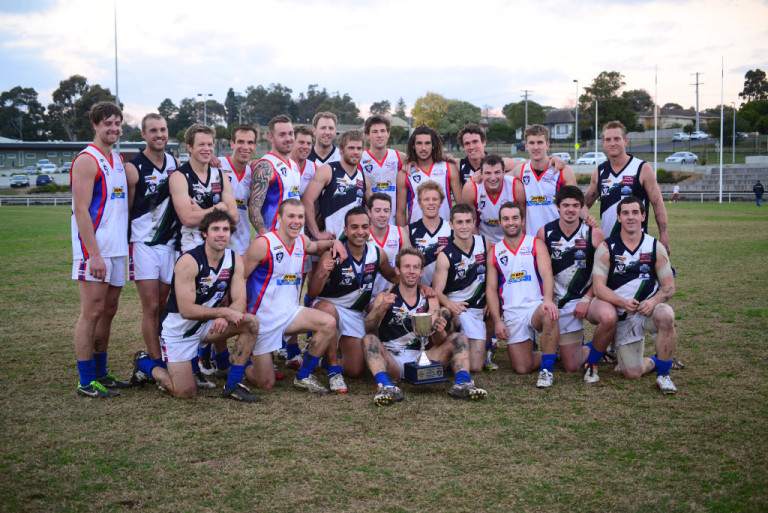
For the third time Gippsland travelled to Bendigo, and this time it was former St. Kilda forward Stephen Milne who was the thorn in Gippsland’s side. The ex-AFL goalsneak was unstoppable with nine of Bendigo’s 19 goals. Wonthaggi’s Aaron Ware was named as best for Gippsland, along with Sale’s Ryan Pendlebury and Warragul centreman Brad Scalzo. Power forward Darren Sheen was Gippsland’s leading goalkicker with four goals.
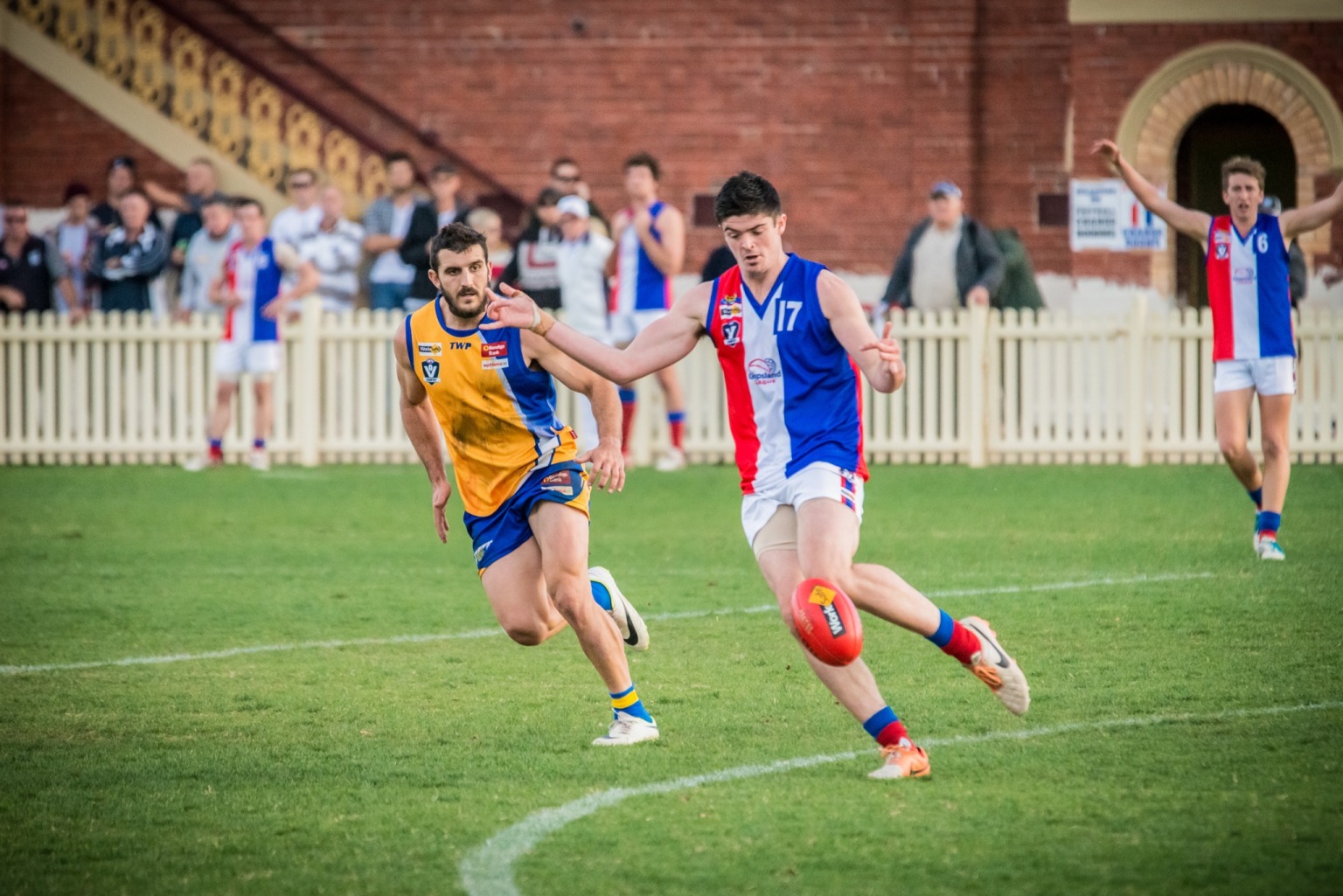
In 2015, at Drouin, Gippsland easily accounted for Yarra Valley Mountain District, holding the visitors goalless after half time. On his home track, Dan Nicholls was best afield in the centre and capped off his performance with three goals. Captain Bob McCallum was unbeatable in the ruck, backed by Traralgon coach Mark Collison and fellow Maroon Tim Northe completing a dominant midfield for the Gippslanders.
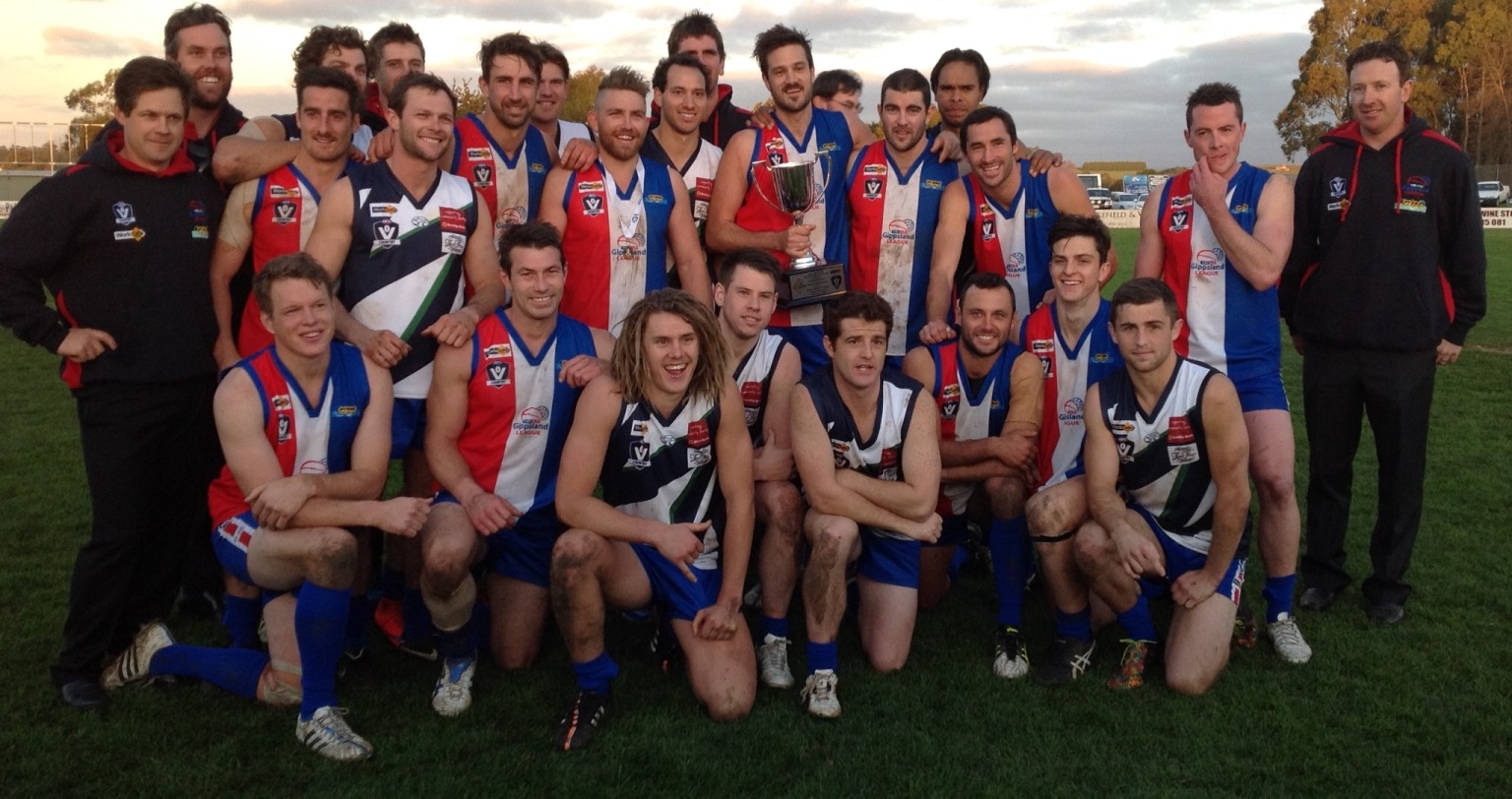
The 2016 match was again against Bendigo, this time on home turf at Western Park, Warragul, and the expectations were high. The Bendigo team applied heavy pressure across the ground in the first half, establishing a handy three goal lead at the long break. Bob McCallum was winning the ruck duels, and Leongatha’s Chris Dunne was lively up forward. Gippsland hit back in the third term with five goals, but could only reduce the deficit to fourteen points. The teams started the final quarter with a goal apiece, but Bendigo finished the better team with six final quarter goals to run out winners by 31 points.
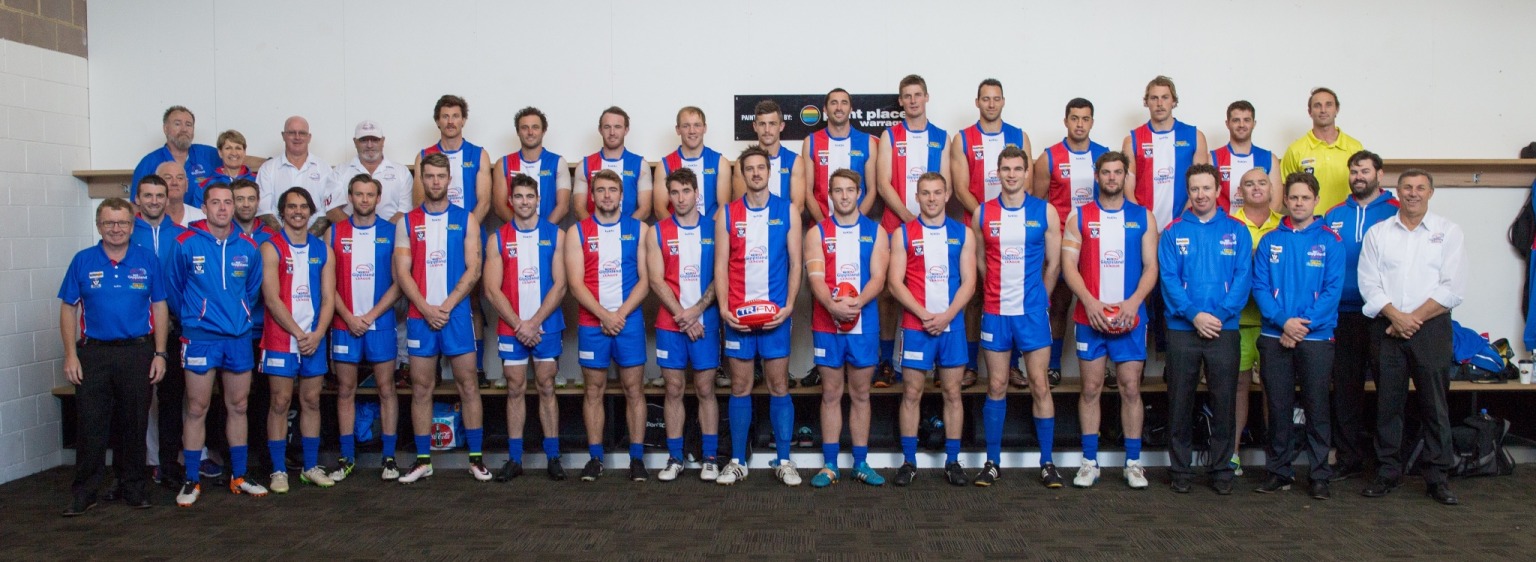
In 2017, Gippsland travelled to Woori Yallock to take on Yarra Ranges, a team they had beaten heavily in both 2013 and 2015. The home team jumped out quickly with two goals in as many minutes from the opening bounce and dominated play from there until the final siren. Gippsland’s shooting for goal (6.14.50) didn’t help their cause, however they were well beaten across the ground as Yarra Ranges recorded a 61 point victory. Brad Scalzo and Russell Cowan won in the midfield, but it was the tall marking forwards for the winners who were impossible to contain.
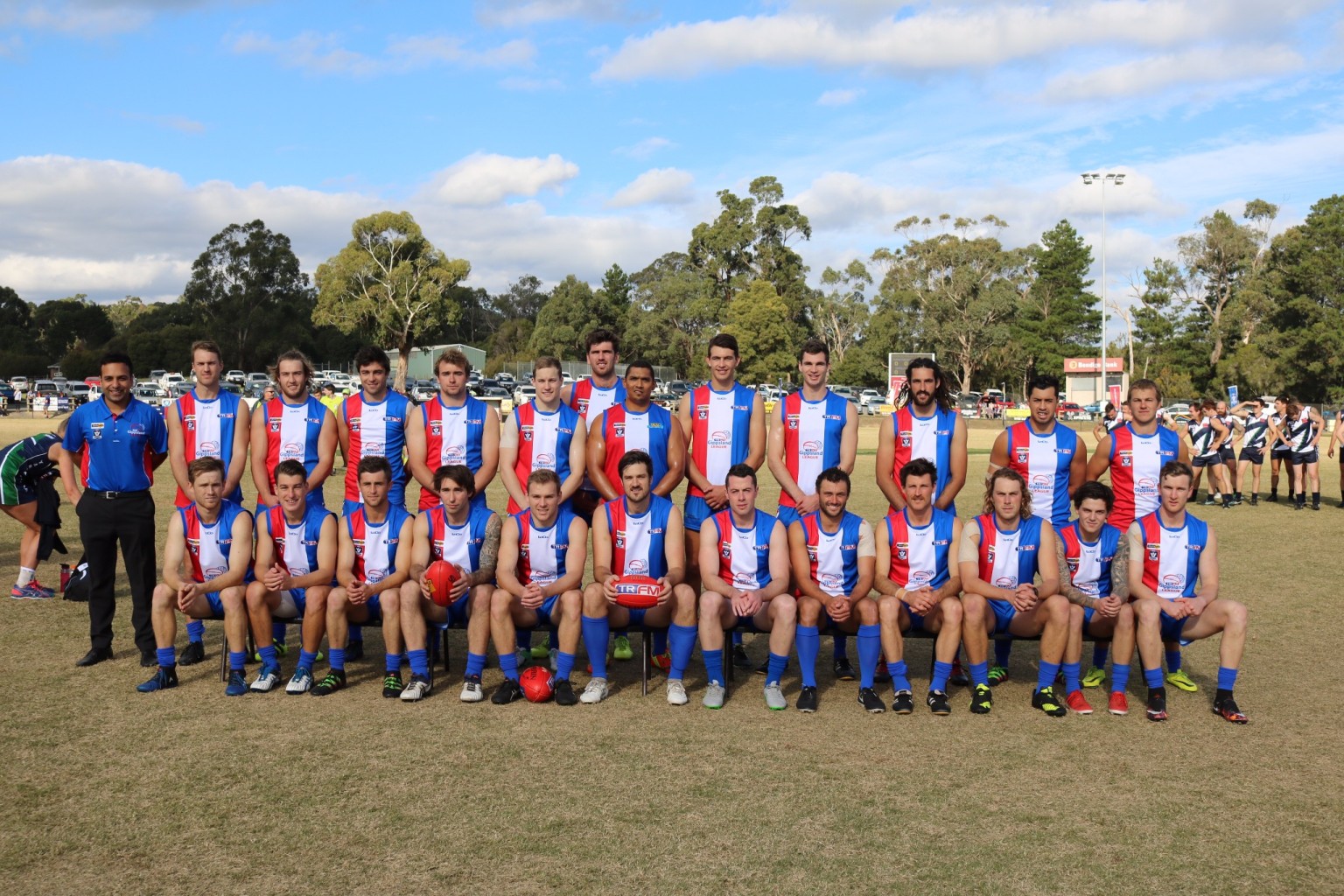
This year Gippsland was at home again, facing the Murray Football League at Moe's Ted Summerton Reserve as they attempted to halt the fall down the rankings to rise back to the top bracket once again. The home team started strongly, with a pair of early contested marks in the goalsquare to vice-captain and ruckman Bob McCallum and Morwell tall Ryan Hearn setting the tone for the 15.19 (109) to 7.5 (47) victory. Drouin midfielder Eddie Morris was awarded the AFL Victoria Medal as Gippsland’s best player, with McCallum and skipper Cade Maskell (three goals) among the other standout performers on the day.
